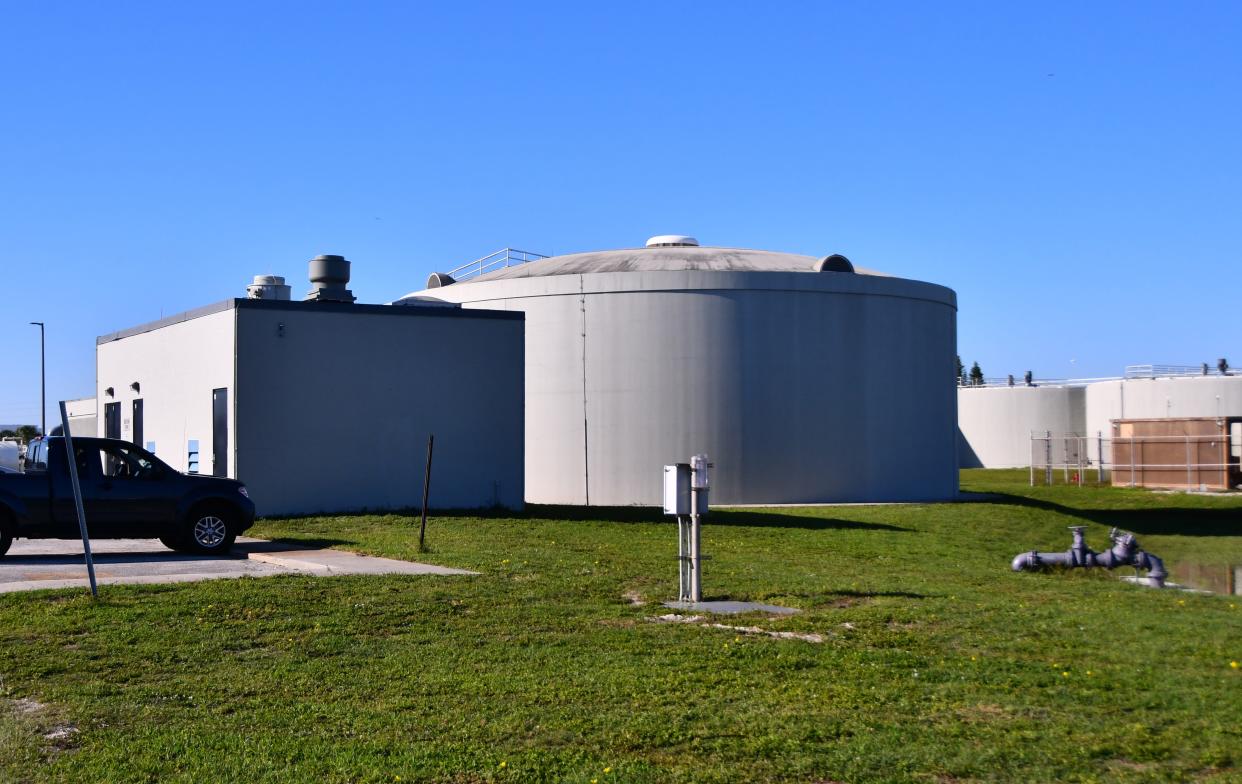Ian's Impact: Raw sewage spewed from manhole covers on Brevard's south beaches

Support local journalism. Unlock unlimited digital access to your best source for news and information on the Space Coast. Visit floridatoday.com/subscribe
An unfortunate but prevalent side effect of Hurricane Ian in Brevard County has been huge amounts of sewage leaks throughout the Space Coast just before, during and after Ian, including — according to the latest county report — 357,300 gallons of waste that flowed up from manhole covers in the south beaches area last week.
The latest county report on the south beaches' spill is that the raw sewage that spewed into the streets there was more that than the initially reported 318,300 gallons of raw wastewater.
"It is assumed that storm water was impacted as the flooding and released wastewater receded," the report Wednesday to Florida Department of Environmental Protection said. It added that the manhole overflows ceased by Sunday.
"Our system is well maintained but these issues have been brought on by power outages, and water inundation," Don Walker, a county spokesman, wrote via email Thursday. "We report these promptly to DEP and deal with the issues at hand. Our investments in our infrastructure will continue with the goal of no discharges."
Hurricane Ian damage: Florida highway flooded by 'several feet' of water days after storm
Pics: NASA's SpaceX Crew-5 Astronauts Arrive at Kennedy Space Center
Road closure: State Road 46 remains closed Wednesday; Cocoa area near St. John's River under a flood warning
Wednesday's sewage-spill update came in the wake of Brevard County's South Beaches plant having spilled some 7.2 million gallons of "highly treated" sewage into the Indian River Lagoon. As of Friday, the spill was ongoing.
Stopping these kind of leaks going forward has to be a priority, according to leading conservationists, who warn that preventing future sewage disasters won't be cheap, but that nothing less than our health and local ecotourism economy are at stake.
"The problem is municipal governments just don't like doing things that raise taxes, because the people don't like hearing their taxes are being raised," said Dave Botto, an Indian Harbour Beach resident and founder and current board member of the nonprofit Marine Resources Council, based in Palm Bay. "The only solution is you've got to somehow get the funding to rehab the sewage system itself.
"Somebody has to stand up and say, 'it has to be done, or in this case, it's a serious health matter if nothing's done,' " Botto added.
Botto calls for "a serious inspection" in terms of flood, powers and the general condition of the infrastructure."
According to the county's incident report to the Florida Department of Environmental Protection:
"High plant influent flows due Hurricane Ian resulted in the need to discharge highly treated effluent to the river from the DEP-permitted plant outfall," the county's incident report to DEP says. "The discharge meets all permit specifications as allowed during a mechanical integrity test, but is occurring outside of the permitted discharge window."
Although the county pointed to Ian for the overflow, the discharge began at 6 p.m. Tuesday, the report says, and was ongoing at the time of the report. However, Ian did not arrive in Brevard County until Wednesday, and in Monday and Tuesday's ramp-up to Ian in Brevard, most of the county saw an inch or less of rain, according to radar rainfall data from the St. Johns River Water Management District.
Brevard reported several other sewage spills it called Ian-related to DEP:
About 190,000 gallons had been released at the Port St John sewer plant via a manhole, between 5 p.m. Sept. 29 and 2 p.m. Oct. 1. The county attributed the overflow to "high rainfall from Hurricane Ian." "Storm water potentially is impacted as the flooding and released wastewater recede," county officials reported. On Wednesday, officials reported that the manhole overflow had ceased by Oct. 1. But, "an additional 7,200 gallons were released, for a total release volume of 197,200 gallons."
From 9 a.m. Sept. 29 to 8 a.m. Oct. 2, Brevard's North Regional/John D. Wright sewer plant released about 5,000 gallons from a manhole "due to high rainfall from Hurricane Ian, and was "intermittently overflowing whenever the lift station pumps turn on ... Storm water potentially is impacted as the flooding and released wastewater recede. On Wednesday, county officials said the manhole overflow ceased by Oct. 2. "An additional 5,000 gallons were released, for a total release volume of 10,000 gallons."
On Sept. 30, county officials reported that some 10,000 gallons of raw sewage had been released from their Port St John sewage plant "due to high rainfall from Hurricane Ian," which cause flows into the plant to inundate the system and the aeration basin. The sewage was contained onsite and no stormwater or surface water was impacted, county officials said.
Jim Waymer is an environment reporter at FLORIDA TODAY. Contact Waymer at 321-261-5903 or jwaymer@floridatoday.com. Or find him on Twitter: @JWayEnviro or on Facebook: www.facebook.com/jim.waymer
Support local journalism and local journalists like me. Visit floridatoday.com/subscribe
This article originally appeared on Florida Today: Hurricane Ian raw sewage Brevard County south beaches

